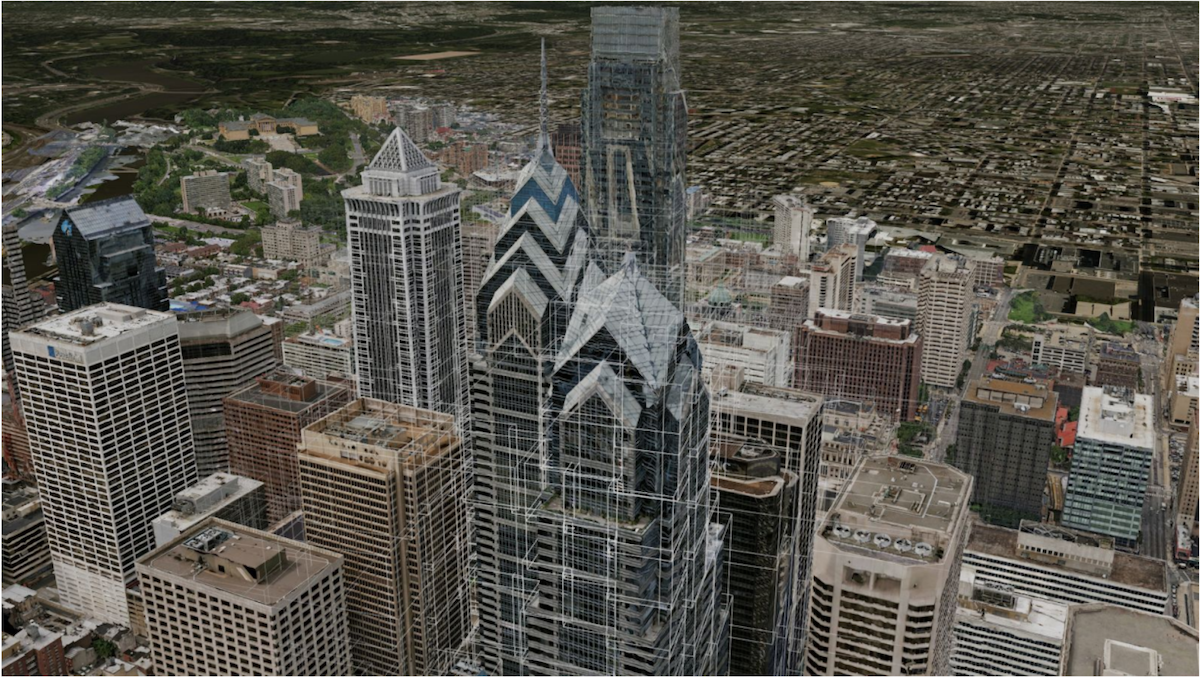We live in a 3D world, so the data we have about it needs to be multi-dimensional, too, says Patrick Cozzi, CEO of the now-standalone company, Cesium.
The 3D geospatial platform venture is a spinout of Exton-based Analytical Graphics Inc. (AGI), which makes software for engineers, operators, analysts and developers working on land, sea, air and space systems.
Cesium started as a project at AGI in 2011 when a team set out to fill a need for temporal geospatial visualizations on the web. The first iteration was CesiumJS, an open-source 3D visualization engine, the company said.
Now, after eight years of building and testing the product, Cesium exists as an open platform to stream, visualize, and analyze 3D geospatial data. It was time to test the waters as a separate company, Cozzi said.
“We’re capturing more data about our world than we ever have before, and more frequently than we ever have before,” the CEO told Technical.ly Philly.
And with $5 million raised in a Series A investment from Falcon Global Capital, Cozzi said the team plans further development of the geospatial platform and will add team members.
“Given how rapidly 3D geospatial data sources are evolving, we believe it’s the right time for Cesium to launch as an independent entity,” said Paul Graziani, AGI’s chief executive officer and cofounder.
The crew has set up shop in Center City, about 40 minutes from its parent company’s Exton office, in The Yard coworking space near 11th and Market streets. Cesium currently has 13 employees, but Cozzi said the company is “doing quite a bit of hiring.”
The vision for Cesium is for developers to be able to build 3D data into their apps, data providers sharing models and datasets in through a link, and 3D data being shared across industries.
In recent years, the National Geospatial Agency used Cesium for 3D web visualization of its Map of the World; Mozilla, better known as Firefox, uses the platform to add real world 3D data to its virtual reality framework; and The Toyota Research Institute uses Cesium to visualize the 3D environment captured by sensors on their autonomous cars, the company said.
And for a more magical experience, the North American Aerospace Defense Command uses Cesium to track Santa’s path around the globe on Christmas Eve.
Cozzi, who attended University of Pennsylvania for his master’s degree, said he’s excited to be building this company in Philadelphia. Many of the team members are Penn or Drexel alumni.
“We want to highlight that we’re building this in Philadelphia, and it’s really important to us that we’re contributing to the tech scene — the geotech scene — here,” he said.
Before you go...
Please consider supporting Technical.ly to keep our independent journalism strong. Unlike most business-focused media outlets, we don’t have a paywall. Instead, we count on your personal and organizational support.
3 ways to support our work:- Contribute to the Journalism Fund. Charitable giving ensures our information remains free and accessible for residents to discover workforce programs and entrepreneurship pathways. This includes philanthropic grants and individual tax-deductible donations from readers like you.
- Use our Preferred Partners. Our directory of vetted providers offers high-quality recommendations for services our readers need, and each referral supports our journalism.
- Use our services. If you need entrepreneurs and tech leaders to buy your services, are seeking technologists to hire or want more professionals to know about your ecosystem, Technical.ly has the biggest and most engaged audience in the mid-Atlantic. We help companies tell their stories and answer big questions to meet and serve our community.
Join our growing Slack community
Join 5,000 tech professionals and entrepreneurs in our community Slack today!

The person charged in the UnitedHealthcare CEO shooting had a ton of tech connections

From rejection to innovation: How I built a tool to beat AI hiring algorithms at their own game

How a laid-off AI enthusiast pivoted to become a founder — while holding down a day job



